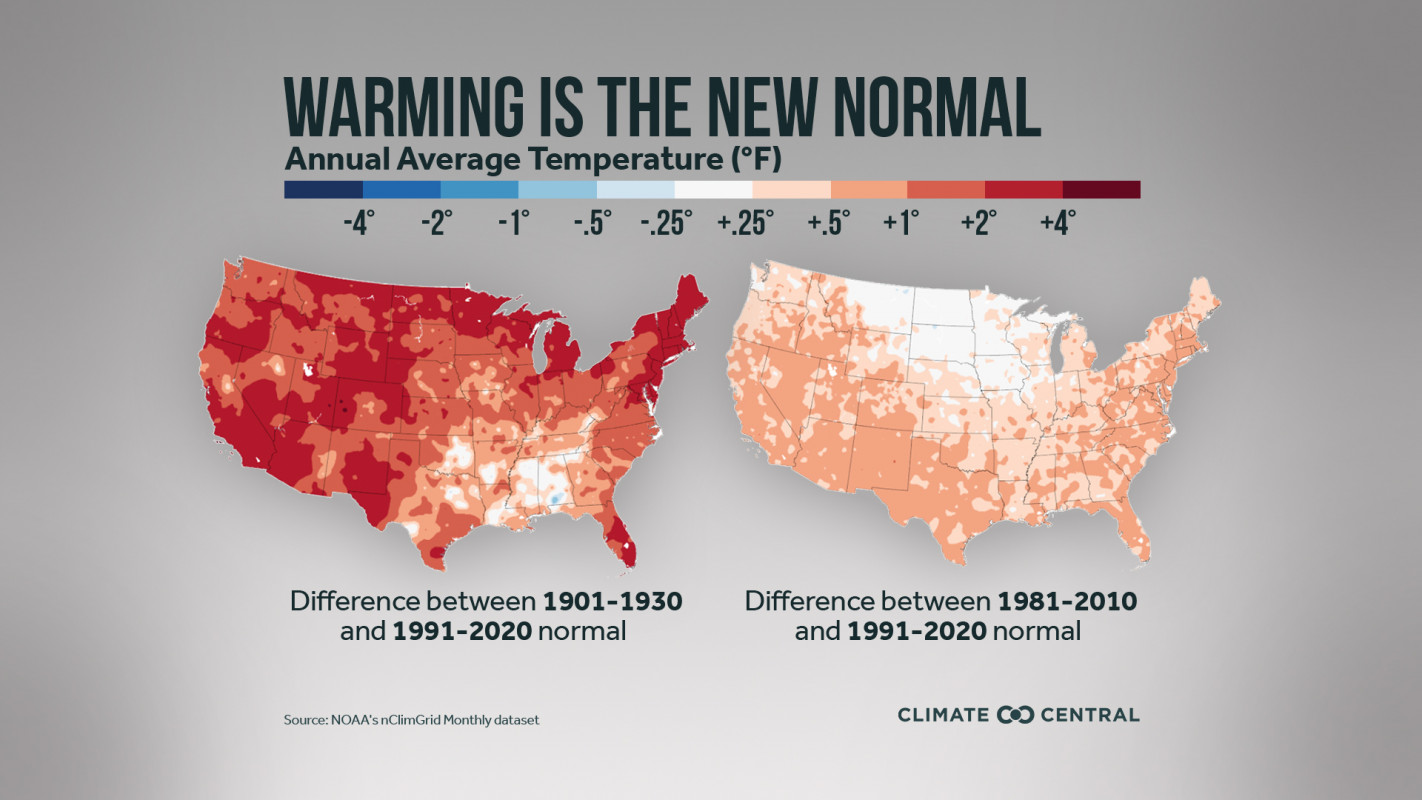 Have you heard the meteorologist say that the temperature or rainfall in your city is above normal?
Have you heard the meteorologist say that the temperature or rainfall in your city is above normal?
To make this claim, they compare daily weather measurements with the 30-year average data. This 30-year average is known as a Climate Normal.
Recently, the National Oceanic and Atmospheric Administration (NOAA) released new data for the 30-year period from 1991-2020. And the results are not surprising -- the U.S is getting warmer and wetter!
What is a Climate Normal?
In the U.S, there are close to 9,000 weather stations that measure daily temperature, precipitation, and other data. This data is averaged over 30 years to create a Climate Normal.
 By comparing daily weather with this Climate Normal, scientists observe how the climate is changing. Farmers rely on Climate Normals to decide what crops to plant and when. Utility companies use the information to prepare for electricity and gas usage, as well as extreme events such as snowstorms or heatwaves.
By comparing daily weather with this Climate Normal, scientists observe how the climate is changing. Farmers rely on Climate Normals to decide what crops to plant and when. Utility companies use the information to prepare for electricity and gas usage, as well as extreme events such as snowstorms or heatwaves.
At the start of each decade, a new 30-year data is released. The Climate Normal that was released recently covers the period from 1991-2020.
Why 30 years? In statistics, a minimum of 30 numbers is needed to have a meaningful average. Hence the World Meteorological Organization (WMO), at the turn of the 20th century, instructed countries to average data from 1901 to 1930 -- and the practice has continued since.
Climate Normals are much more than a simple average of data. Scientists have to account for gaps in data or changes in instruments used for observation.
What does the “New Normal” Show?
 The new Climate Normal shows that the average temperature of the U.S has increased by 0.5º F from the previous 30-year period of 1981-2010. Since 1900, the increase is 1.7º F (or 1º C).
The new Climate Normal shows that the average temperature of the U.S has increased by 0.5º F from the previous 30-year period of 1981-2010. Since 1900, the increase is 1.7º F (or 1º C).
While most of the U.S is getting warmer, some areas such as the Northern Great Plains have seen a slight cooling in the spring.
There have also been changes in precipitation with the central and eastern parts of the U.S getting wetter. This is because higher temperatures cause more water to evaporate and this leads to more rainfall and snowfall. The U.S Southwest, however, is getting drier with less rainfall.
The increase in temperatures over Alaska means that for the first time, Fairbanks will "no longer have a sub-Arctic climate" according to Rick Thoman, a climate specialist. Instead, it will lie within a “warm summer continental” zone!
The purpose of creating new Normals each decade is to inform governments and policymakers. There is still time and hopefully, the latest results will spur countries around the world to take action to curb global warming.
Sources: NOAA, NY Times, Washington Post, CBS







